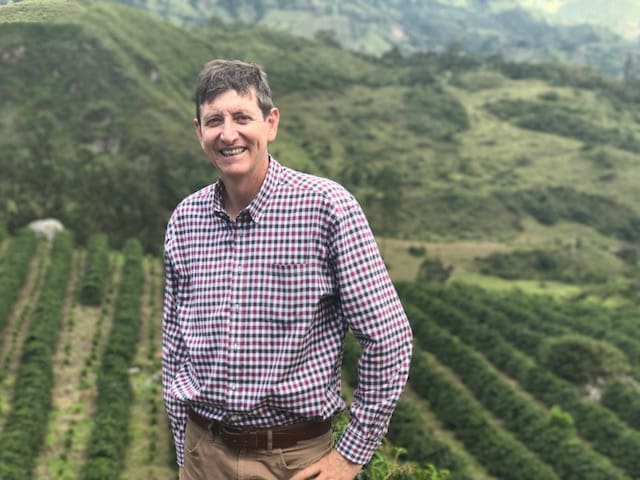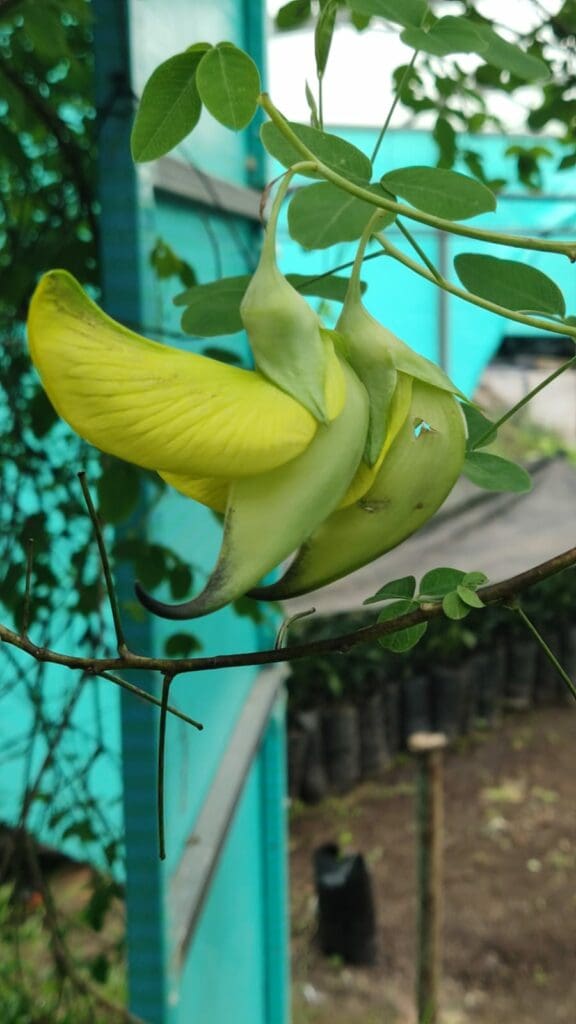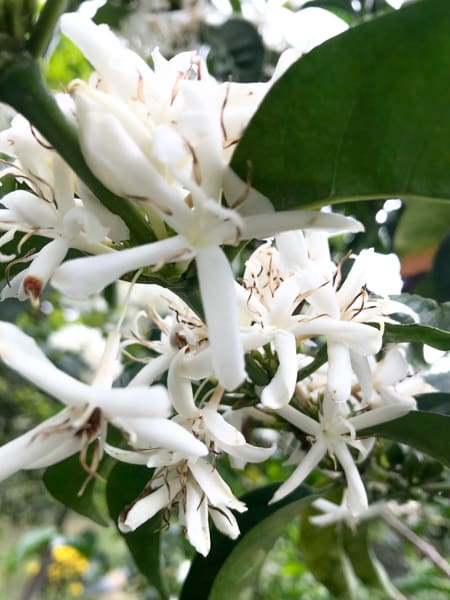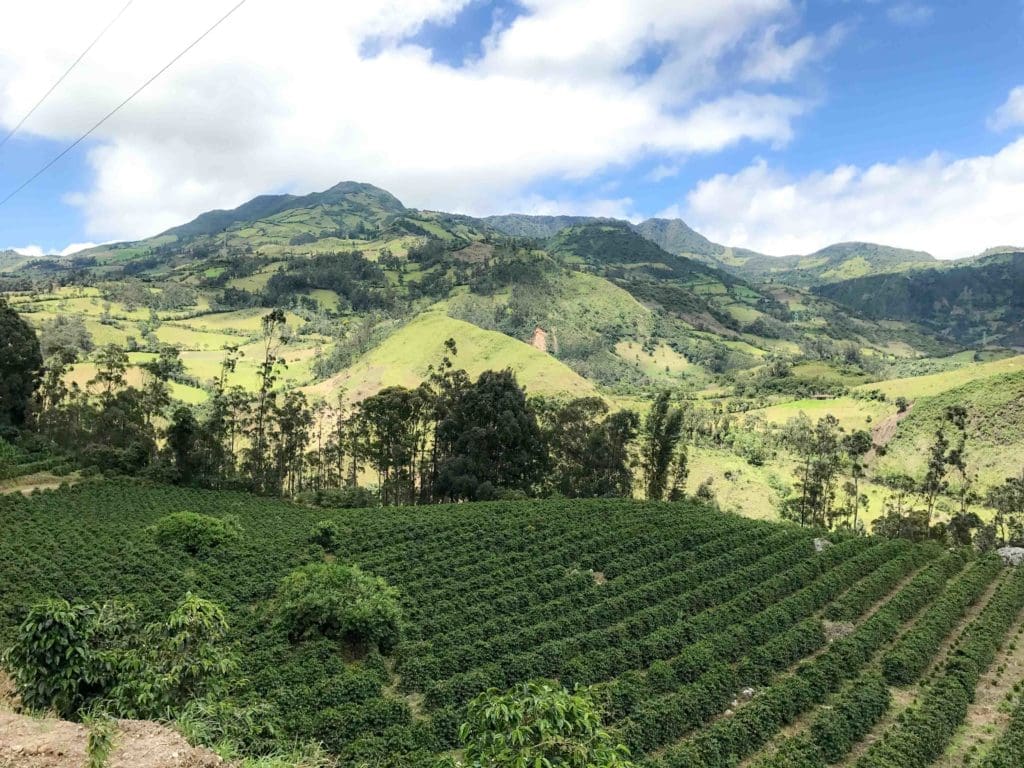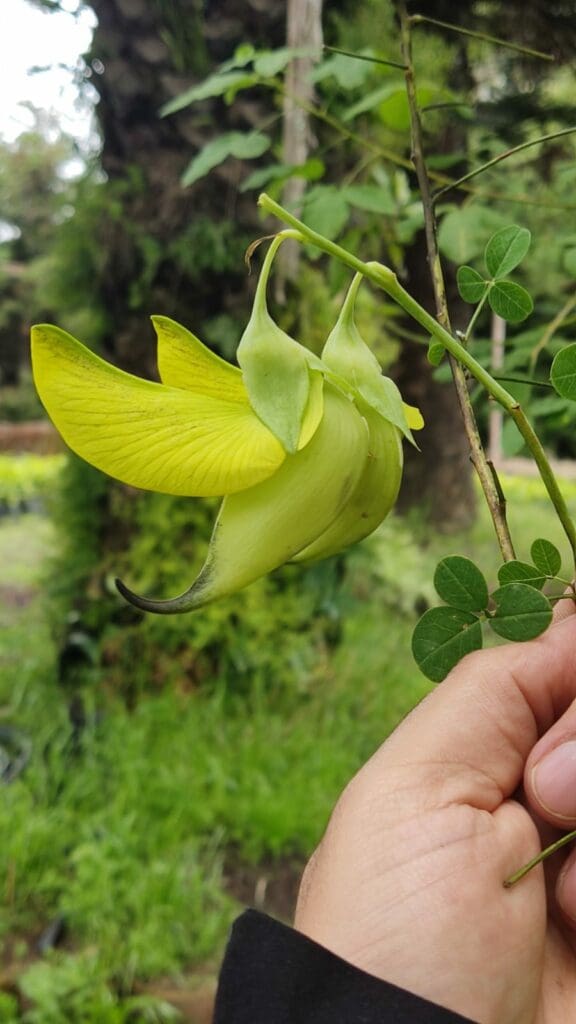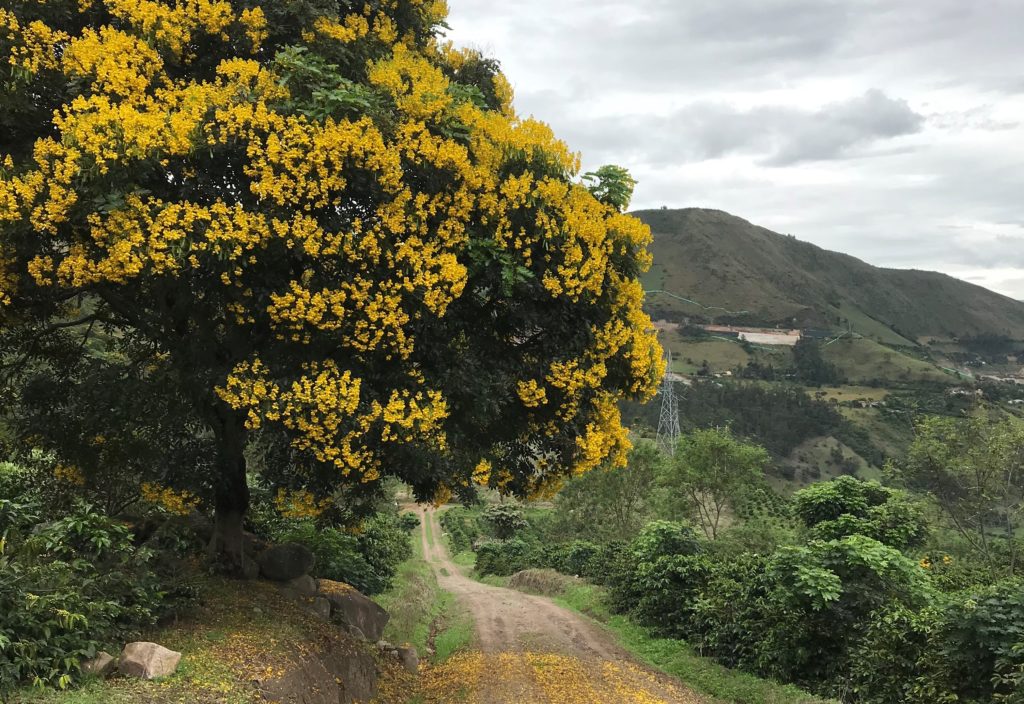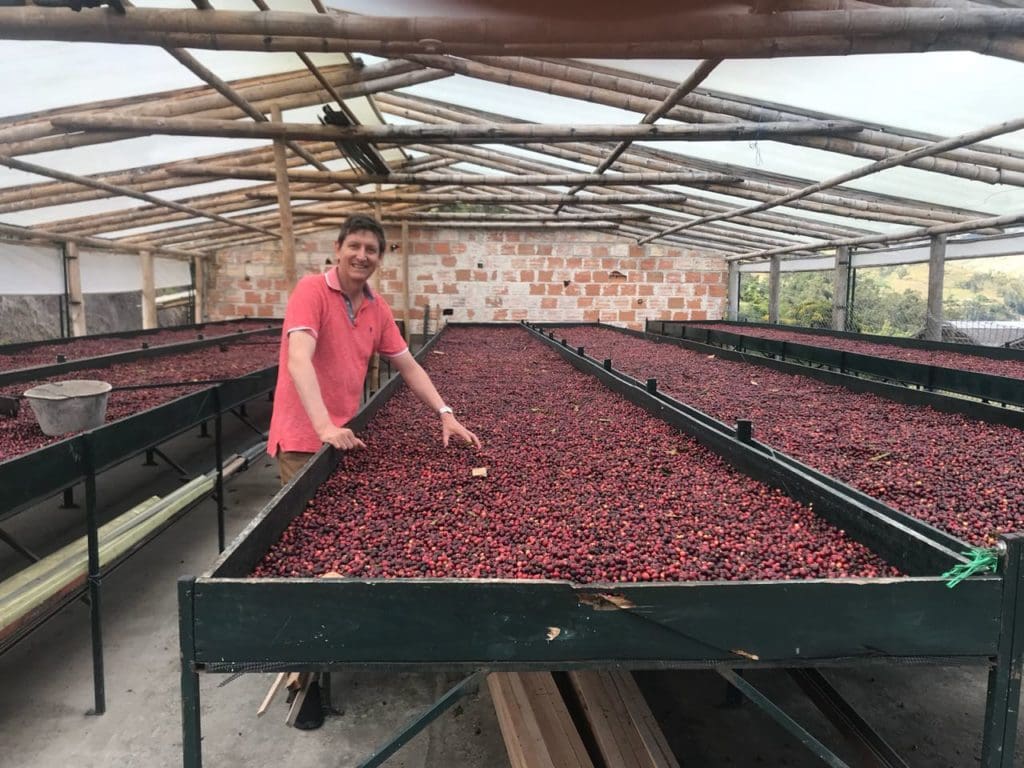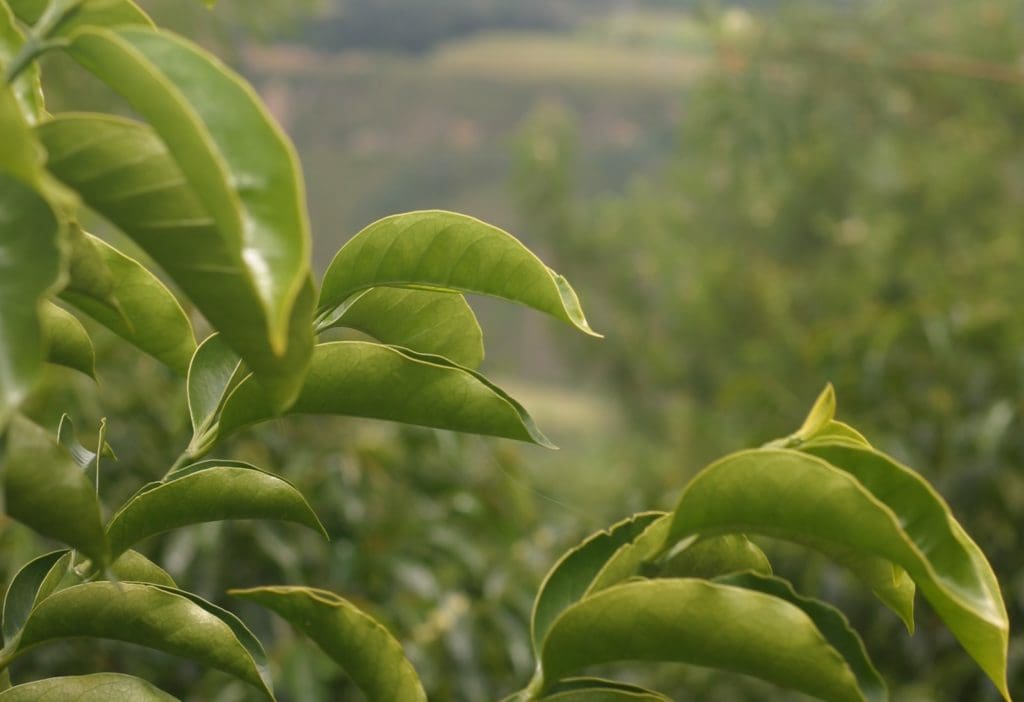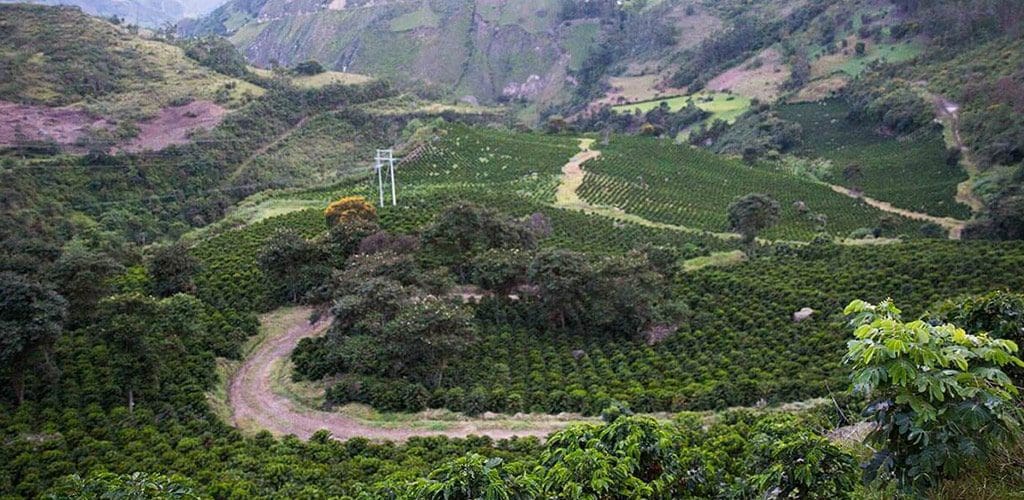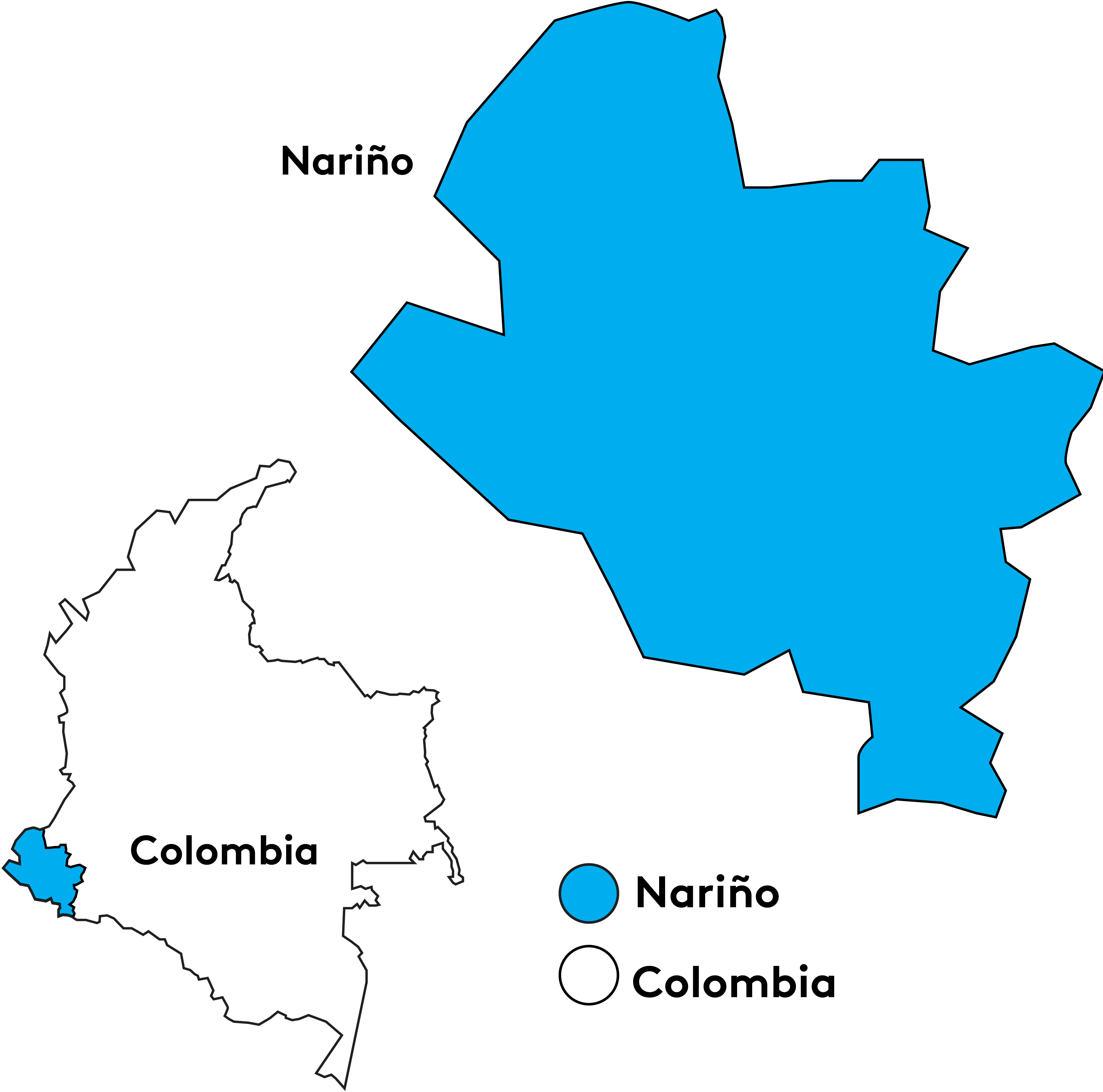Mr. Pablo Guerrero was the first to introduce coffee to the Tangua area outside of the city of Pasto in the year 2000. Hacienda El Obraje has been in Pablo’s family for many years and originally produced wheat and other grains on 92 hectares of land. However, when the Colombian government began importing grains in the 1990’s it was no longer viable to continue producing wheat. Pablo and his team experimented with fruit trees for ten years, but challenges like bringing fresh fruit to market made fruit production an unsuccessful alternative.
When Pablo first began planting coffee in 2000 he grew traditional coffee and didn’t have a mill of his own. By 2009 he had built a facility to process his own coffee and entered the specialty coffee market. From there he continued to experiment; he planted new varieties and started processing Natural as well as Washed coffee. Transitioning to coffee production was risky because he was unsure how productive coffee would be at such high elevations, but the coffee trees flourished and now others are following in his footsteps.
El Obraje’s wet mill on the property now includes tile fermentation tanks, depulping equipment, mechanical oven dryers, and raised drying beds under a solar dryer. Having the mill on site means that coffee processing begins as soon as the cherries are harvested. Obraje also maintains its own nursery to take care of coffee trees in their early stages. The team plants seeds directly into 2 kg bags of soil before replanting them in the field. The farm utilizes mixed fertilization, using 1–2 kg of organic fertilizer and 300 g of chemical fertilizer per tree.
The climate and terrain of Obraje are major contributing factors to its coffee’s unique cup profile. The farm is situated near many volcanic mountains, and the rocky soil is rich with minerals. Obraje often does not receive adequate rainfall and instead has to irrigate select lots using water from the farm’s retention pond. Temperatures vary greatly in a day, ranging from 32°C at noon to 8°C or less at night. The drastic temperature fluctuations impact the density of the coffee beans, and also causes the trees to be more compact than trees of the same variety growing in other regions of Colombia. The humidity is high during the rainy season, making it nearly impossible to dry coffee on raised beds. Initially, planting shade trees would have been disadvantageous given the humidity, as they would have trapped too much moisture and caused diseases. The coffee has adapted to its conditions though, and the farm now has low-density shade trees planted along with the coffee trees.
Hacienda El Obraje is a truly stunning property in the mountains of the Nariño department, with coffee planted on the slopes descending to a river valley. The nearly 100 hectare estate now cultivates coffee on only 25 of its hectares; the rest of the land has been converted into a natural forest reserve by Pablo. By planting more trees and implementing efficient landscape design he has been able to preserve a unique microclimate, as well as providing access to every corner of the farmland. The transition from apple orchard to coffee estate began as a challenge, but has ultimately proven to be a rewarding venture for the farm. Pablo’s background in architecture has led him to approach coffee production with both passion and pragmatism, using planting and processing strategies designed for long term farm health.
According to Pablo, “Experimenting with fermentation has been quite interesting. We have tried different times and temperatures, first with the cherries and after with the beans. I have learned many things. It’s important to always have the same quantity of coffee during the fermentation process, or at least give the coffee similar conditions of space and temperature.”
This blend is 73% Gesha and 27% Maracaturra coffee. The blending of these coffees was a logical choice for Pablo for a number of reasons. These plants have similar ripening times and very similar sugar content as well. Maracaturra trees are planted between Gesha plants on one of the lots at El Obraje, so the cherries are harvested and blended right away. Maracaturra was chosen originally as an experimental variety for El Obraje from farms in Central America. The variety makes up just a small portion of the farm’s total production, but its unique flavor profile of yellow fruits and honeysuckle florals make it an irreplaceable component in Colibri Blend.
The cherries were first fermented whole for 40 hours in sealed tanks. This anaerobic environment allows only specific bacteria to work and break down sugars. After depulping, the coffee was dry fermented for another 40 hours in sealed GrainPro bags. This second fermentation allows natural yeasts and lactic bacteria to work, developing deep flavors in the coffee. Once the sugar content reaches 10 degrees Brix, the coffee is rinsed to remove excess mucilage before being moved to drying beds for 20–25 days of drying. During the peak of harvest, when mill capacity is at its maximum, the coffee is instead dried on raised beds for 16 days and then dried under the hot 30°C airflow of the mechanical parchment combustion dryer for 4 days.
